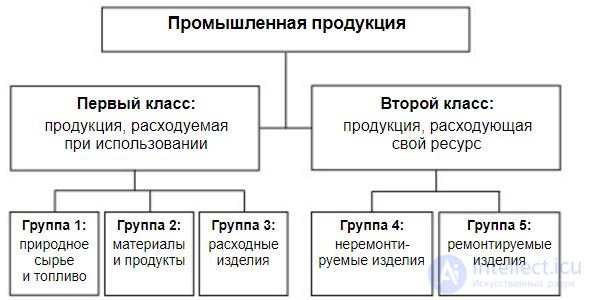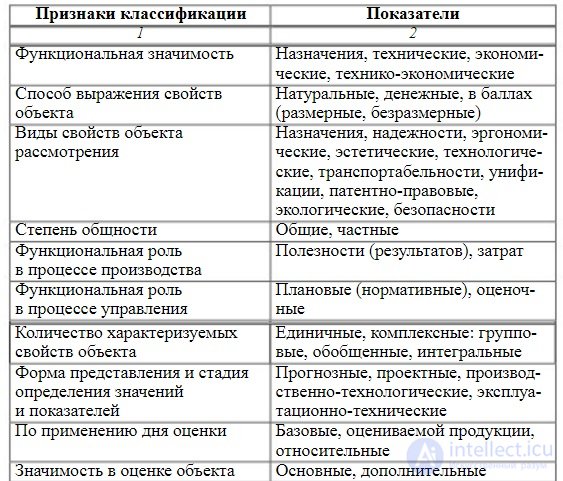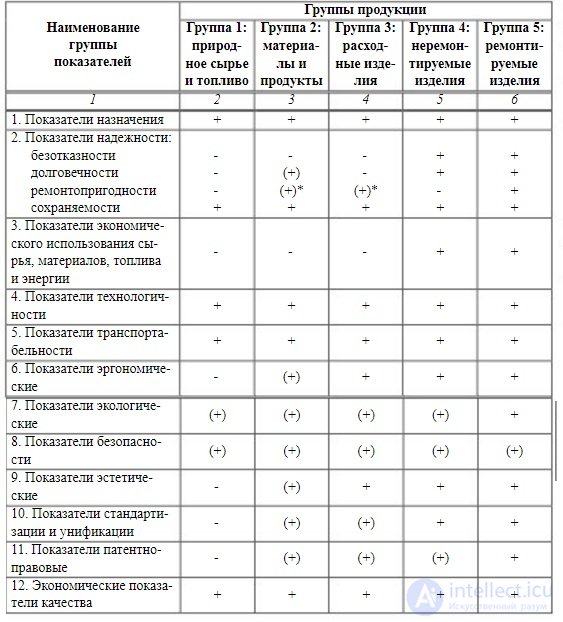Lecture
Lecture questions:
1. Quality indicators
2. Classification
key indicators
3. Applicability of indicator groups
to assess product quality
1. Quality indicators
Currently, the market has a large number of
different products with different prices. Every consumer you
picks up the product that represents the greatest for him
value, based on his ideas about the quality of the goods
price and possible costs of operation. Turns out that
the use value of the goods is not the same for
all buyers, it is highly individualized, although in its
mass, according to the laws of mathematical statistics, the average
the weighted market value of the goods always approaches
its true consumer value.
Consumer value of products depends not only on
performance indicators, but also from a number of other
gich consumer values, directly or indirectly characterized by
products.
All consumer values can be conditionally classified
be divided into several categories that differ from each other
temporary factors of action: basic, permanent, temporary
values, accompanying, introduced, universal.
Baseline values are customer values, embraced
products at the design stage and characterized
performance indicators, to which
include performance indicators (functional), reliability
(reliability, durability, maintainability, preserving
bridge), technical aesthetics
(integrity of the composition, perfect
sales appearance), environmental (physical, chemical,
microbiological), ergonomic (compliance with ergonomics
requirements in the work area), patent law (patent
cleanliness, patent protection), security and transportation
nosti.
The listed indicators characterize products on
throughout its life cycle. They can perfect
change, but their initial nomenclature does not change. These
indicators determine the basic consumer quality that
is the basis for comparison with competitors' products.
The basic values include the cost of production
tion characterizing the production and technological base
manufacturer and its resource potential. Sebe-
the cost of manufacturing products is actually the sum
the cost of creating and selling products with given bases
quality indicators, i.e. there is a high correlation
between the basic quality of the product and the cost of its
cooking.
Permanent, temporary, related and introduced
consumer values complement the base. Additional
values do not change the underlying quality
ektirovaniya products, but reinforce or shade its action
in the eyes of the consumer, which translates into an increase in consumer
Tel cost of production.
Permanent values are such additional needs.
rebellious values that are valid throughout
product life cycle, but have to the basic values
direct and indirect relationship. For example, the image of the firm
product manufacturer, store prestige, system certificate
quality topic, brand popularity, etc. These values
have a different rating. Their impact on the buyer allows
There is a lot to increase the use value of products.
In some cases, the influence of only these values provides
em long-term liquidity of products, even if it is
benchmarks inferior competitors. Image of the firm,
The example also acts as the signature of a famous artist.
Temporary values are additional values
direct relation to the type and quality of products, but
temporarily, sometimes seasonally, usually less vital
product cycle: novelty, fashion, prestige. These values are ruled by
lo, for some time allow you to keep the shock prices of pro-
duction. Ideal when the product life cycle is commensurate with
the duration of the temporary values. Temporary prices
are realized by the potential margin to the
the cost of the goods, decreasing in time (due to its
Rally wear).
Related values - additional consumer
values not directly related to products but
facilitating or impeding the conditions for its acquisition or
exploitation: seasonal demand for products, inflation rate
(for exported or imported goods). Soputst-
these values can both contribute to liquidity
and to impede its implementation. Markup to products for
action scores associated values can significantly
dick in time.
Values brought in - informational values:
llamas, exhibitions, contests that by themselves have neither
direct or indirect relation to the product, but at the expense of the new
or repetitive value-related information.
products significantly increase its consumer
cost in the eyes of many buyers. To the added value
Stages also include rumors, opinions, life experiences. Impact
The added value can be both temporary and
permanent (for example, advertising). Value added in
time act similarly concomitant. Oscillatory
nature of the markup caused by the weakening in time of exposure
informational activities (until it is resumed).
Most products, as a rule, have no additional
consumer values. This especially applies to
materials, semi-finished products, components,
which are professionally evaluated by consumers by
basic characteristics, so their value in the market can
with a high probability to be predicted even in the period of
work Since additional values are expressed as a surcharge
to cost, then the share of this margin can be considered profitable
the value of products due to specific customer value
Universal Values - Market Value of Products
or price. Price is the main value, which, like a mirror, is adequate.
on consumer properties, but with some error, you
driven by the stochastic nature of the dependence of price and quality
va. At the same time, the price, whatever the product, has
universal dimension (in monetary terms), i.e. by her
You can compare the value of different in appearance and quality of products.
Successful promotion to the market of a new product in many
This will depend on the proper consideration of all factors influencing
on the liquidity of products, and especially on the possibility
manufacturer to identify or form additional
consumer values that enhance the basic quality
products.
Thus, quality indicators are the main
category of consumer values, create a base for
price, the cost of production depending on its
original quality. Based on basic values (shown by
quality assurance) all subsequent values are formed,
giving the composition of the consumer value of products. Only not
who have no connection with basic values, they
were noted above.
Quantitative characteristic of one or several
properties of products that make up its quality, is called
product quality.
High quality of products is predetermined by various
factors, the main ones are:
- factors of a technical nature (constructive, technical
nological, metrological, etc.);
- economic factors (financial, norm
mativnymi, material, etc.);
- social factors (organizational, legal,
new, personnel, etc.).
2. Classification of key indicators
All industrial products in order to assess its level
quality is divided into two classes: 1 - consumable when using
nii; 2 - consuming its resource. In fig. 6 shows the total
classification of industrial products.

Fig. 6. Classification of industrial products
Indicators of properties that reflect product quality
depending on the goals and nature of the tasks to be solved,
sifify by various signs (Table 4).
Table 4
Classification indicators of product properties

3. Applicability of indicator groups
to assess product quality
To determine the quality level of technical products
All indicators of its properties are grouped. Group classification
indicators and their applicability are presented in table. five.
Table 5
Applicability of product performance groups

Note. - inapplicability; + applicability; (+) limited
inclinability; * instead of maintainability - recoverability. Groups 1, 2, 3 -
products consumed during use. Groups 4, 5 - production costs
blowing its resource.
Guided table. 5, first determine the groups of
properties taken into account when assessing the level of excellence
the quality of the product being evaluated, and then establish a
Manklatura relevant indicators.
Comments
To leave a comment
Qualimetry reliability and quality
Terms: Qualimetry reliability and quality